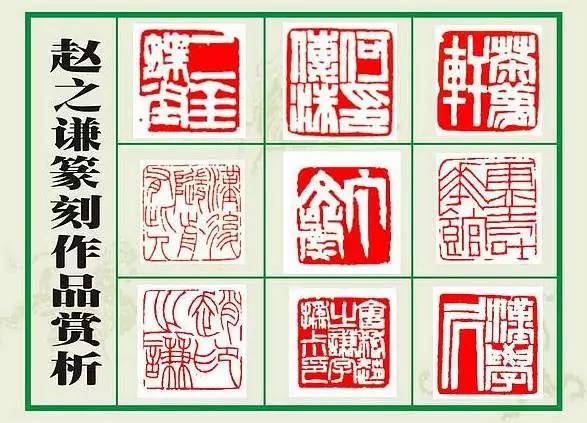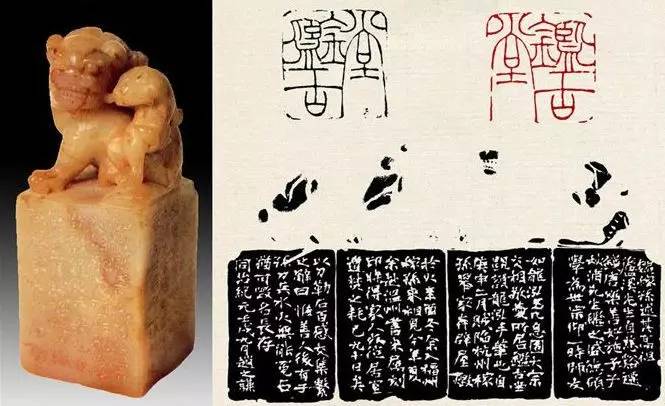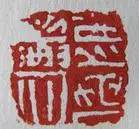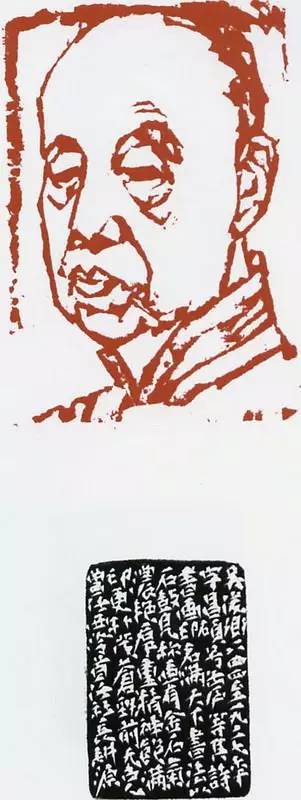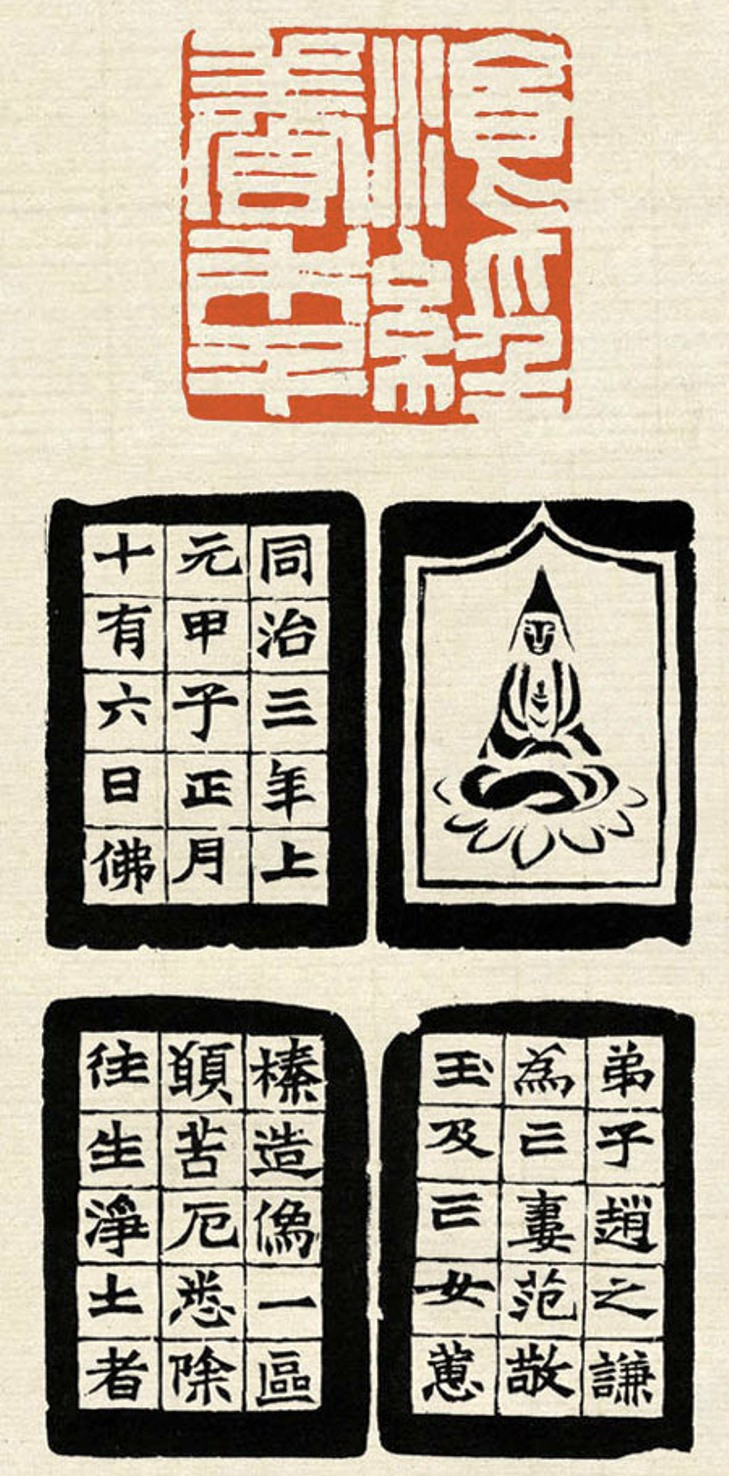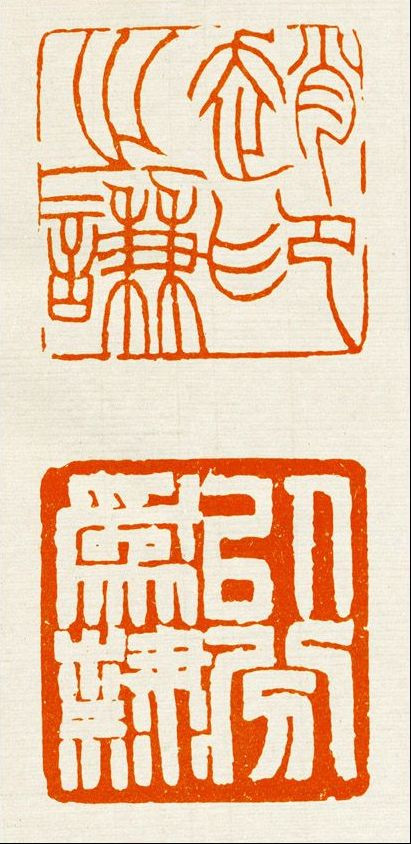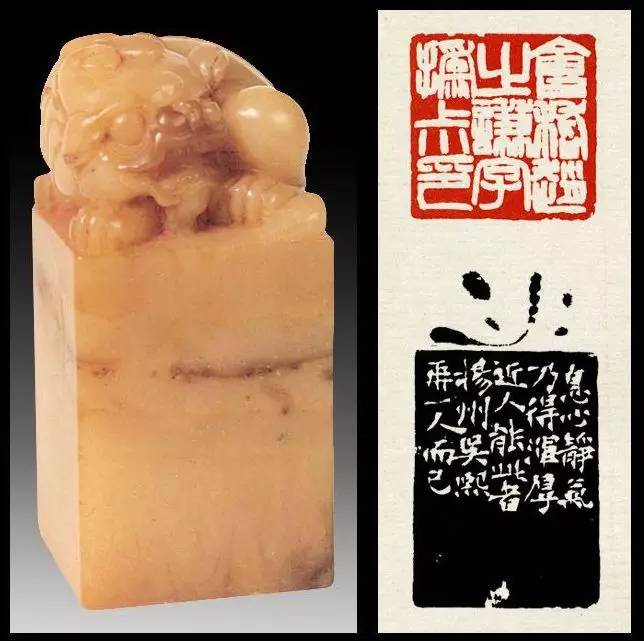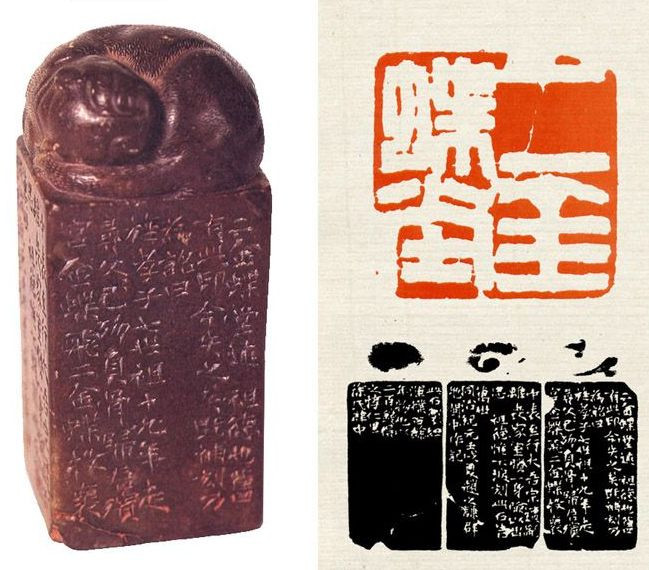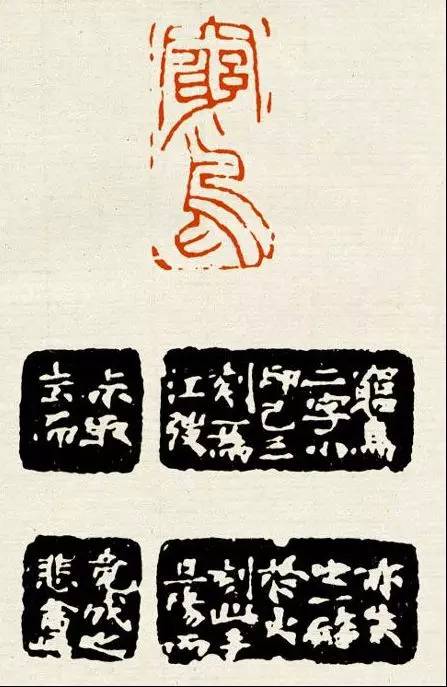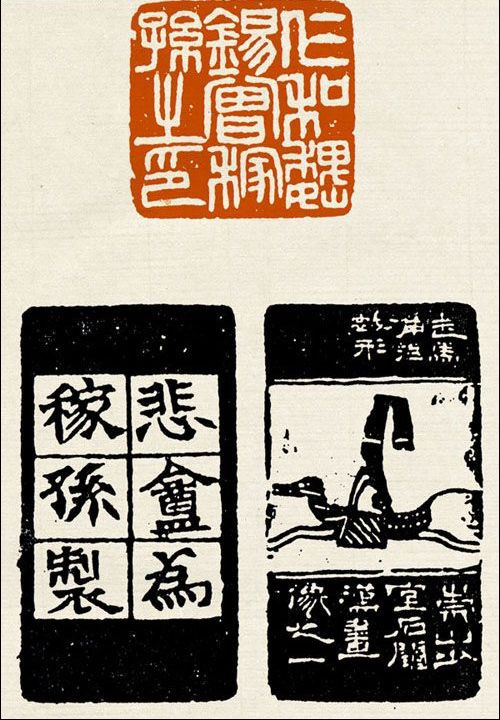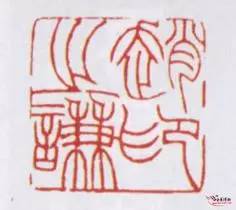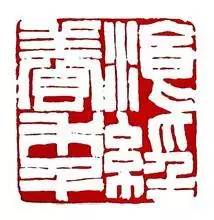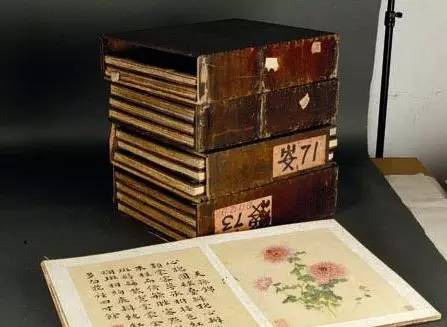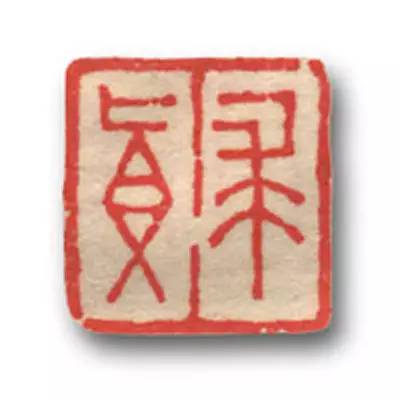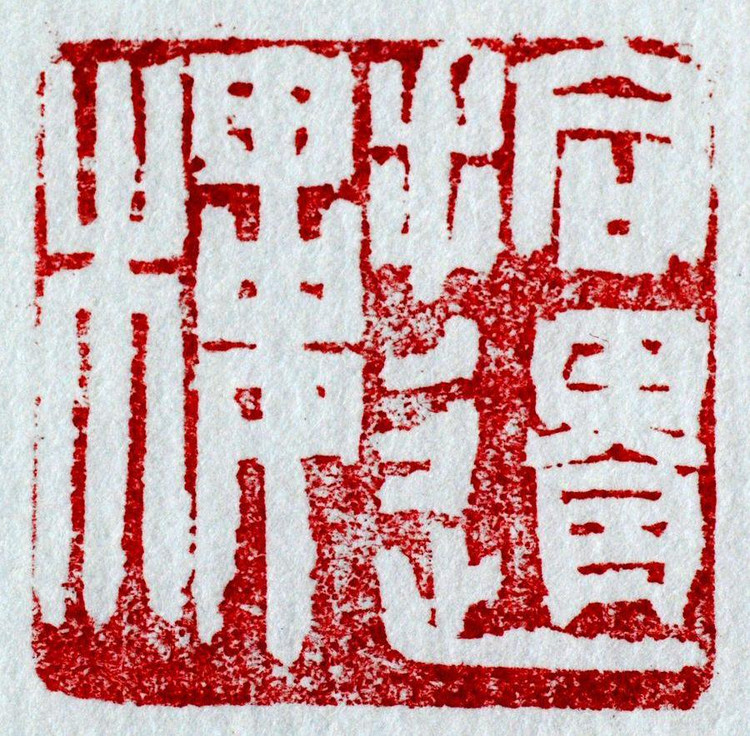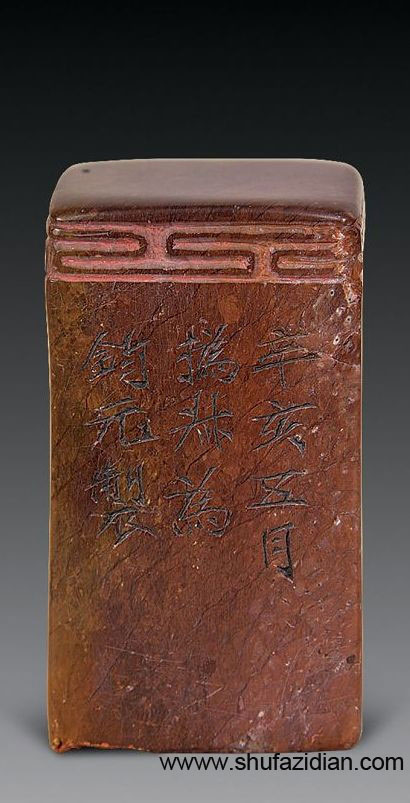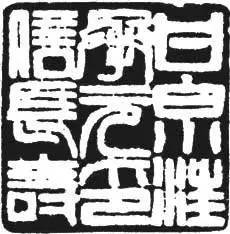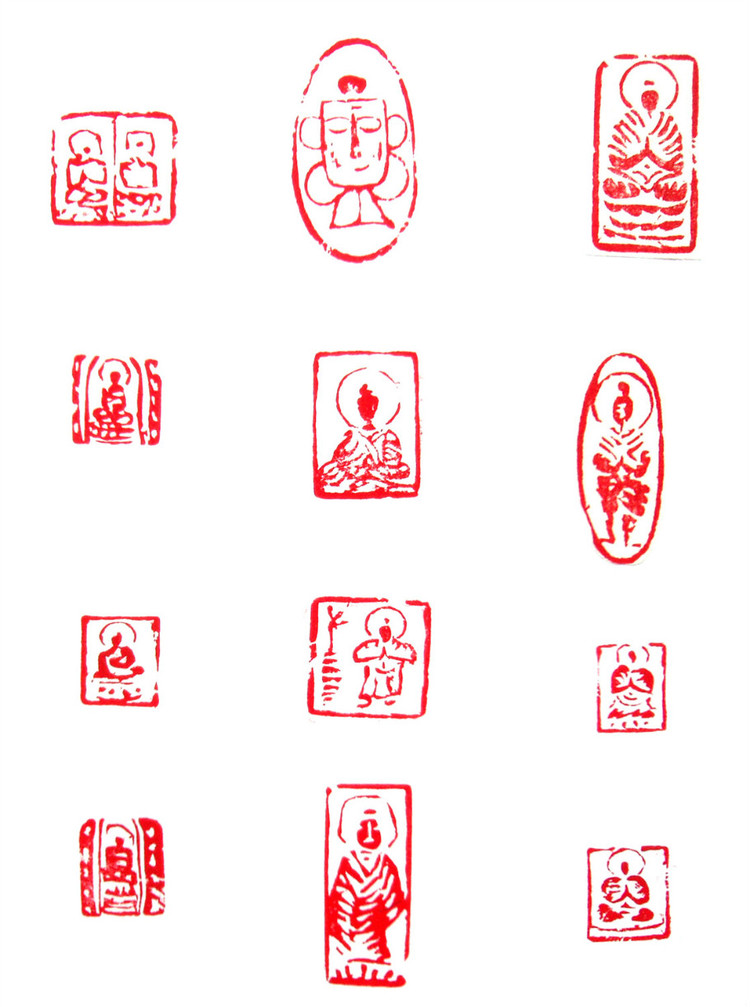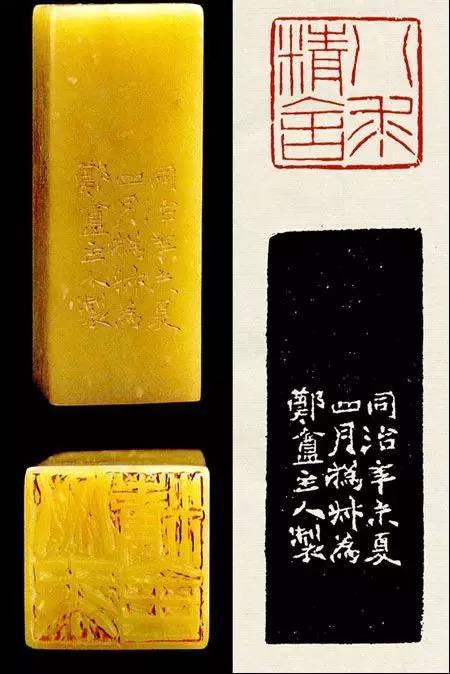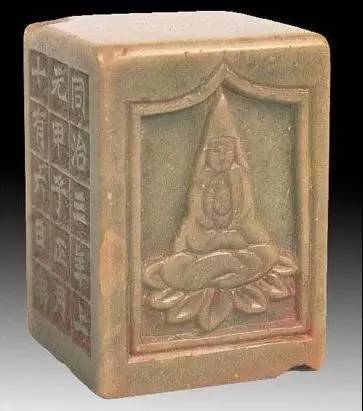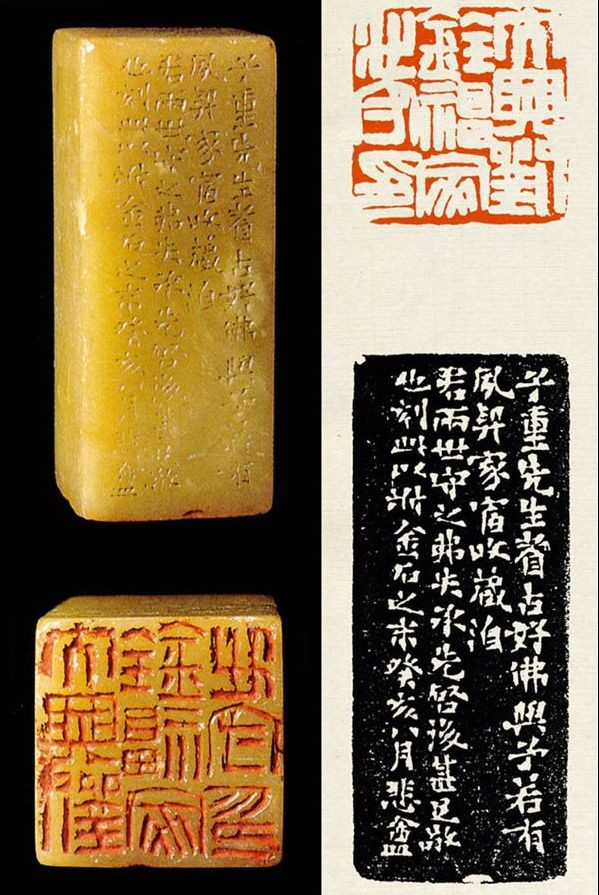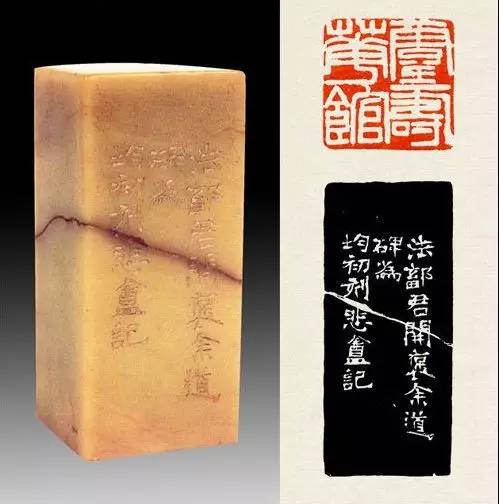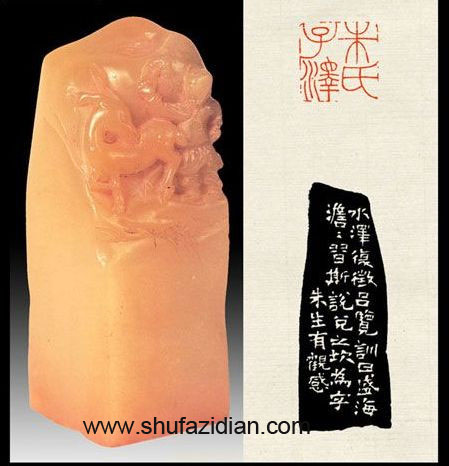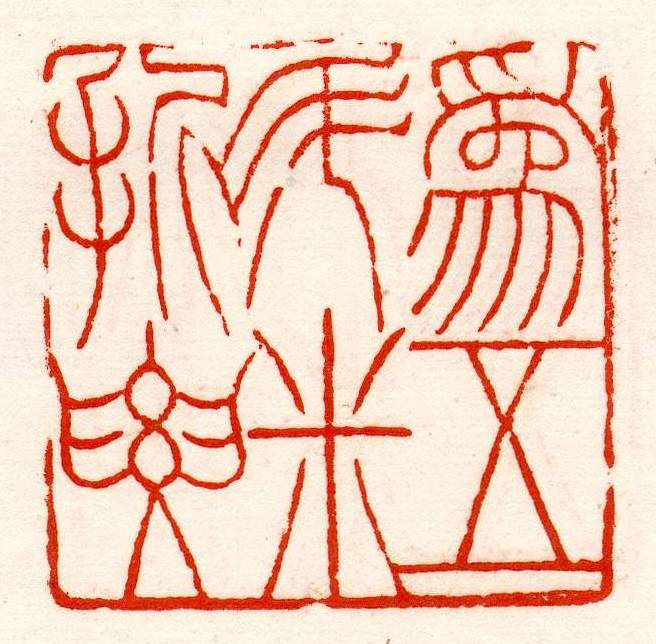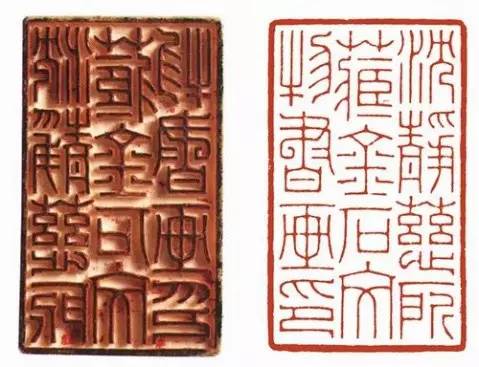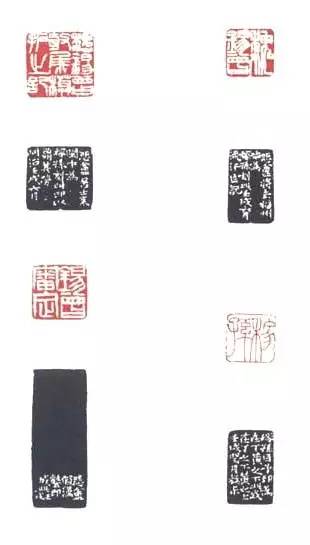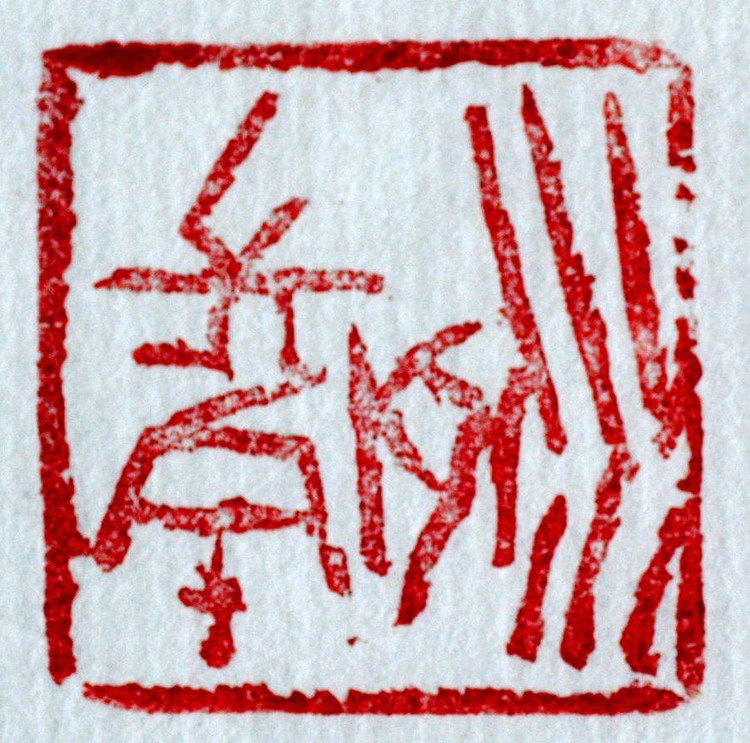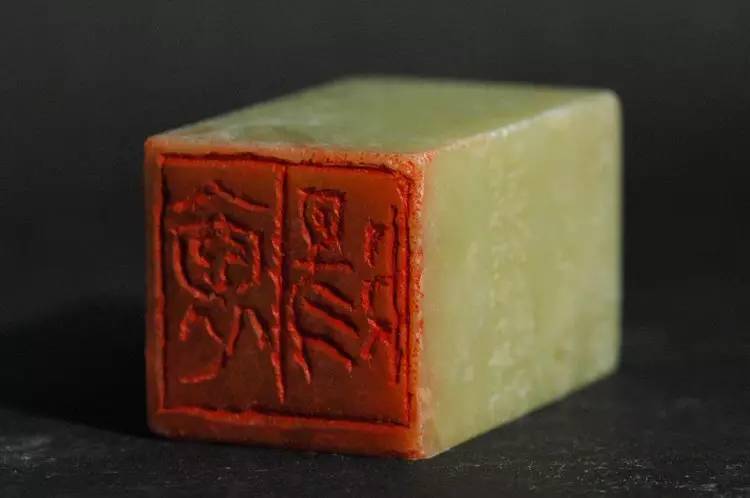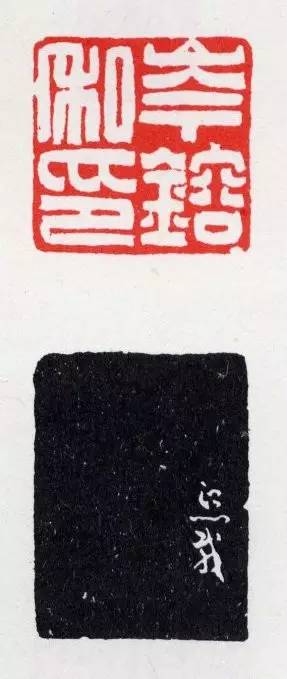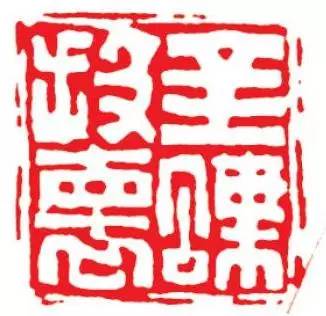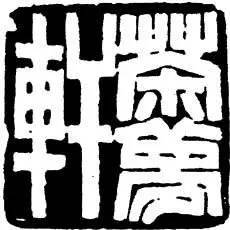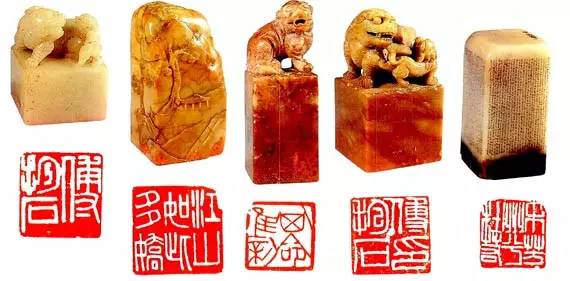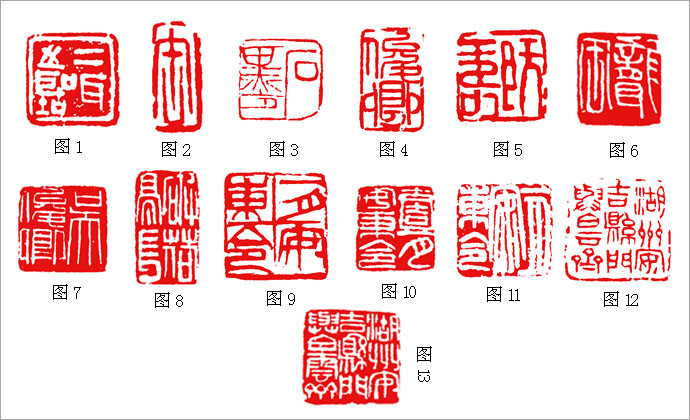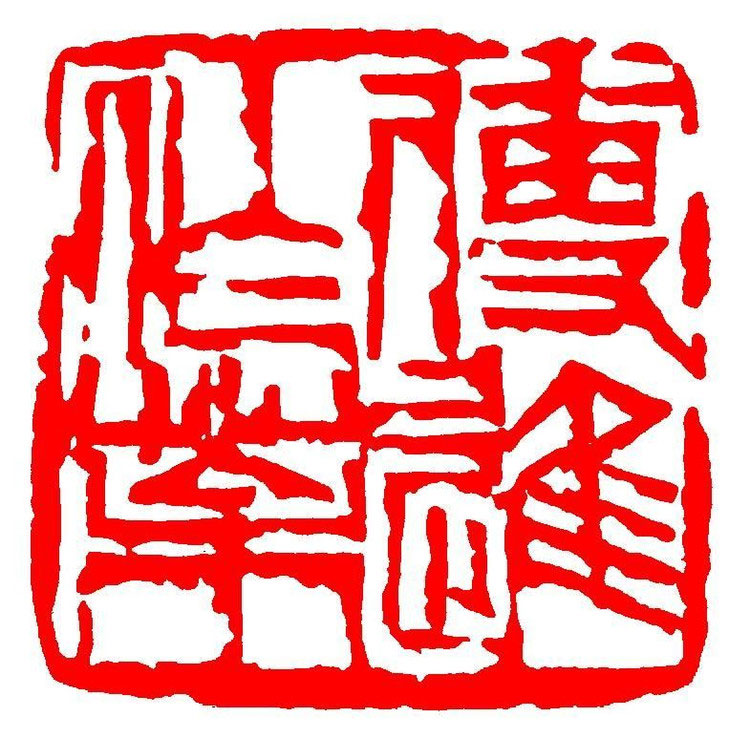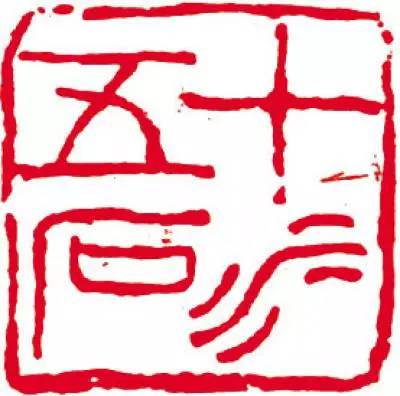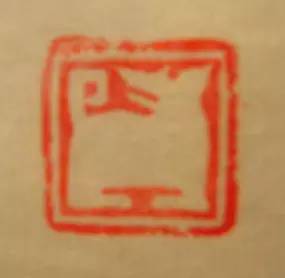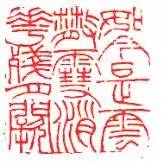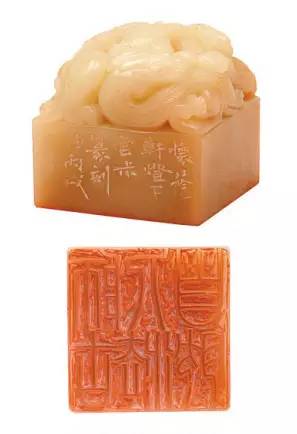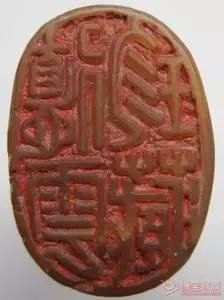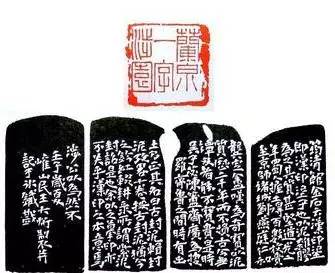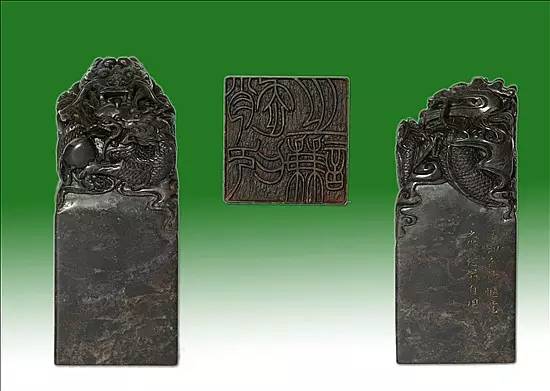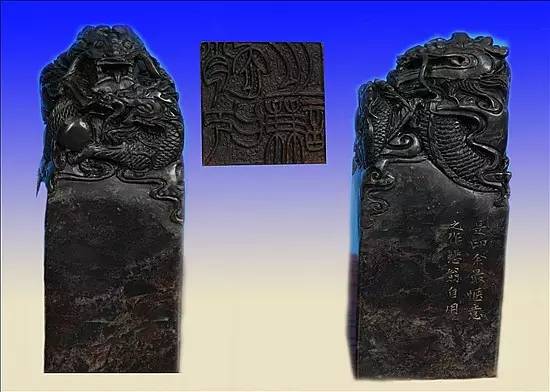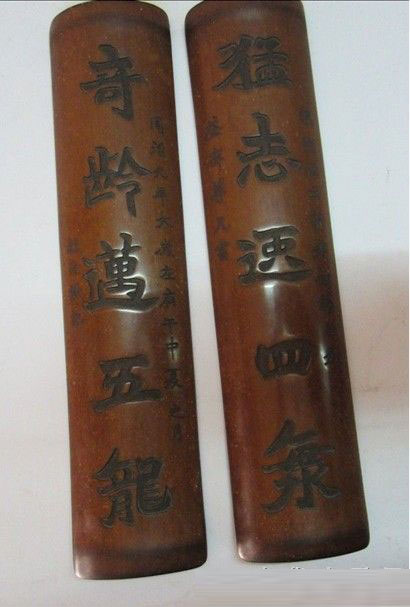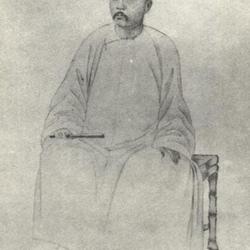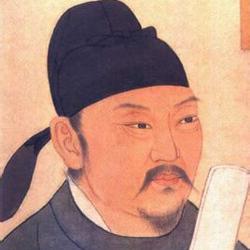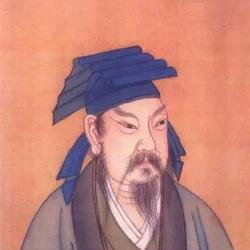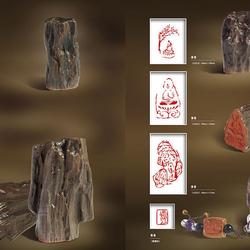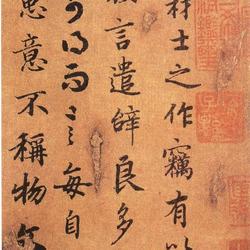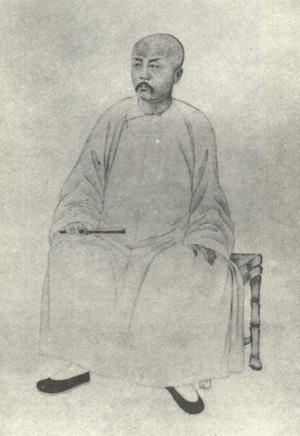
Zhao Zhiqian (1829-1884) was a famous calligrapher, painter and seal carver in the Qing Dynasty of China. Han nationality, native of Shaoxing, Zhejiang. The first name was Yifu, and the nickname was Lengjun; later the name was changed to Lushu, and the names were Tiesan, Hanliao, Bei'an, Wumen, Mei'an, etc. He lived in "Erjindietang" and "Kujianshi". He served as magistrate of Poyang and Fengxin counties in Jiangxi Province. He was good at poetry and prose, and was good at calligraphy. He first studied with Yan Zhenqing, and used seal script and official script with Deng Shiru. Later he became his own style, stubborn and powerful. Stay out of fashion. He was good at painting, and his flowers were modified after imitating Shi Tao. He was the pioneer of freehand flowers in the late Qing Dynasty. He first learned seal cutting from the Zhejiang School, followed the seals of the Qin and Han Dynasties, and then joined the Song, Yuan and Anhui schools. He obtained Qin imperial edicts, Han mirrors, coins, Han inscriptions and stele texts, etc. for printing. He swept away old habits and made his works green and powerful. In his youth, he became famous all over the world for his talent. His attainments in calligraphy are multi-faceted, and he can integrate Zhen, Cao, Li and Zhuan brushwork into one, complementing each other and complementing each other. Zhao Zhiqian once said: "Independence is precious, the world is huge, many people say it, and independence is hard to find." He made unremitting efforts in poetry, calligraphy, painting and art throughout his life, and finally became a master of his generation.
He has been reading and learning calligraphy since he was a child, and he is knowledgeable and knowledgeable. He once made a living by painting and calligraphy. I took part in the examination three times but failed in all of them. At the age of 44, he was appointed editor-in-chief of "Jiangxi Tongzhi" and magistrate of Poyang, Fengxin and Nancheng counties. He died in office. He is good at figures, landscapes, and especially flowers. At first, he painted beautiful styles. Later, he adopted the methods of Xu Wei, Zhu Da, and the Eight Eccentrics of Yangzhou. His pen and ink tended to be indulgent, with vigorous and free brush strokes, free and easy colors, rich colors, and full of novelty. His first calligraphy master was Yan Zhenqing, and later he adopted the method of Northern Dynasty stele inscriptions. He wrote regular script with gentle and rounded strokes, and was known as "Wei Di Yanmian". His seal script was based on Deng Shiru's work and was mixed with the style of Wei stele brushwork. It has a unique style and can also be used as cursive script in the style of Wei stele. Zhao Zhiqian first copied the eight schools of Xiling in seal cutting, and later followed the Anhui school, adding imperial edicts, Han mirror inscriptions, coin inscriptions, tile inscriptions, seal seals, etc. to form a unique style with varied compositions and fresh artistic conception, and created the Yangwen edge style. , whose art organically combined poetry, calligraphy, painting and sealing, had a great influence on the art world of the late Qing Dynasty. Many of his calligraphy and painting works have been handed down to the world, and later generations edited and published various picture albums and albums. He wrote "The Beizhen Jushiwen", "Beizhen Jushi Poems", "Yonglu Xianjie", "Bu Huanyu Visiting Monuments", "Six Dynasties "Bieziji", which is printed with "Erjindietang Seal Pu". In addition, Zhao Zhiqian wrote "Zhang Zhonglie Gong Chronicle", which narrates the life of Zhang Huangyan, a famous anti-Qing general in the late Ming Dynasty, in a chronological form. Zhao Zhiqian's seal cutting achievements were huge and had a profound influence on later generations. Modern masters such as Wu Changshuo and Qi Baishi have benefited a lot from others.
Appreciation of Zhao Zhiqian’s seal cutting works
